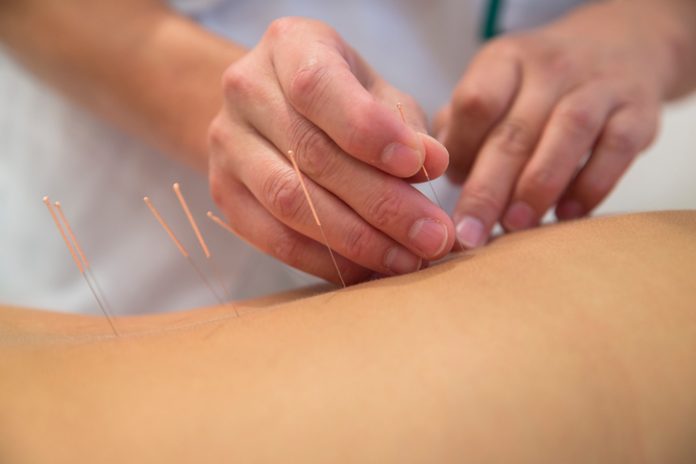A 2017 study out of the Journal of Orthopaedic & Sports Physical Therapy suggests that dry needling could provide an alternative for cortisone injections in pain treatment.
According to the study, dry needling, a technique that uses thin filament needles to penetrate the skin and stimulate the trigger points of pain, could be used in patients with greater trochanteric pain syndrome (GTPS). This comes as an alternative to cortisone (corticosteroid) injections, which have a wide variety of serious side effects.
This study, led by Kindyle L. Brennan, PT, PhD, OCS, COMT, is the first to compare the use of dry needling and cortisone injections to manage GPTS. Overall, it confirmed the equal effectiveness of the two treatments.
Previously, cortisone injections were inducted as the standard treatment for GTPS, as it was believed that the pain originated from inflammation of the hip bursa. However, it has now been found that GTPS pain arises as a result of muscle and tendon injury.
“Dry needling the myofascial structures of the hip region is aimed at improving the biochemical and neuromuscular homeostasis of these structures, which research has demonstrated is more likely the source of patients’ pain,” says Dr. Brennan.
Over the course of the study, 43 participants (50 hips) were given either cortisone injections or dry needling. At the end, patients in both groups reported less pain and improved mobility, but dry needling offered equal pain reduction and functional outcomes, without cortisone’s side effects. This being said, dry needling did cause some minor adverse reactions, including post-injection soreness, flushing, and sweating.
Dr. Brennan adds that dry needling should be followed by physical therapy to reduce chances of recurring pain.
“The end result is not simply addressing the pain, as cortisone would, but the factors that led up to and continue to contribute to the pain,” she said “Pain is a very complex entity that can become its own animal long after the original injury is healed. The clinical and basic science of dry needling suggests tremendous potential for modulating pain perception, local pain sources, and motor recruitment patterns, which have become dysfunctional as sequelae of injury or regional dysfunction.”







